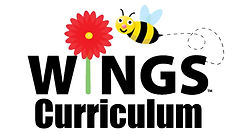Exploring Natural Wonders: A Thematic Journey Through Living Things, Land, Air, and Water
- Dr. Bisa
- May 31
- 3 min read
The world is full of wonders, and in early childhood education, every discovery can spark curiosity, joy, and a lifelong love of learning. With WINGS Curriculum, educators can weave a rich tapestry of thematic learning that encourages young children to explore their natural environment through inquiry, play, and hands-on experiences. Over the next month, let’s dive into the theme of Natural Wonders—focusing on Living Things, Land, Air, and Water as weekly studies to create engaging, developmentally appropriate lessons across learning domains.

🐾 Week 1: Living Things – Plants & Animals
Essential Question: What makes something alive?
Key Concepts:
Characteristics of living things (grow, move, need food and water)
Differences between plants and animals
How to care for living things
Activities:
Plant a Seed: Create a classroom garden using clear cups so children can observe roots growing. Integrate science and math by measuring growth each week.
Animal Movements: Mimic how different animals move—slither like a snake, hop like a bunny—supporting physical development and vocabulary.
"I Am Alive" Chart: Help children sort pictures of living and non-living things as a group activity.
Literacy Connection: Read "From Seed to Plant" by Gail Gibbons or "The Very Hungry Caterpillar" by Eric Carle to explore life cycles.
🏔️ Week 2: Land – Mountains, Soil, Rocks, and Habitats
Essential Question: What makes the land different in different places?
Key Concepts:
Types of landforms (mountains, hills, valleys, deserts)
Soil and rocks
Habitats and who lives where
Activities:
Texture Table: Provide bins with sand, pebbles, clay, and soil for sensory exploration.
Habitat Sorting: Match animals to their appropriate land habitat (e.g., desert, forest, tundra).
Create a Landform Collage: Use natural materials and recycled art supplies to build models of landforms.
STEAM Focus: Use magnifying glasses to explore soil samples and compare textures—enhancing observation and science skills.
🌬️ Week 3: Air – Wind, Weather, and the Sky
Essential Question: What is air, and how do we know it's there?
Key Concepts:
Air is invisible but has effects
Types of weather and how they feel
How wind moves objects
Activities:
Wind Play: Use scarves, pinwheels, and bubbles to explore wind movement.
Weather Journals: Encourage daily drawing and discussion about the weather to build observational skills and pattern recognition.
Make a Windsock: A simple art and science integration that helps children visualize wind direction.
Vocabulary Boost: Introduce words like breeze, gust, storm, and forecast through stories and songs.
🌊 Week 4: Water – Oceans, Rain, Rivers, and the Water Cycle
Essential Question: Where can we find water and why is it important?
Key Concepts:
Bodies of water (ponds, lakes, rivers, oceans)
Water cycle basics (evaporation, condensation, precipitation)
Animals that live in water
Activities:
Sink or Float: Conduct simple experiments to see which items float and sink—great for developing prediction and reasoning.
Watercolor Oceans: Use watercolors to paint sea life, reinforcing fine motor skills and creative expression.
Water Cycle in a Bag: Use a plastic bag, water, and a marker to model the water cycle on a sunny classroom window.
Song Time: Sing “The Water Cycle Song” to reinforce new concepts through music and movement.

🌈 Bringing It All Together
WINGS Curriculum encourages educators to use intentional teaching strategies that support the whole child. As children explore the Natural Wonders of their world, they're building knowledge in science, literacy, math, art, and social-emotional development—through active discovery and joy.
Pro Tip: Create a "Wonder Wall" in your classroom where children can post questions or observations each week. This fosters curiosity and gives you insight into what they’re most eager to learn next.
What natural wonders will your class explore today? Share your classroom photos and stories on social media using #WINGSWonder and connect with other early educators bringing nature to life for young learners.
.jpg)




Comments